How To Choose A Pickleball Paddle? The Ultimate Guide

CEO & Technical Expert at Pickleball Equipment Company (Art Pickleball)
Specialize in manufacturing pickleball paddles, pickleball balls, and pickleball accessories.
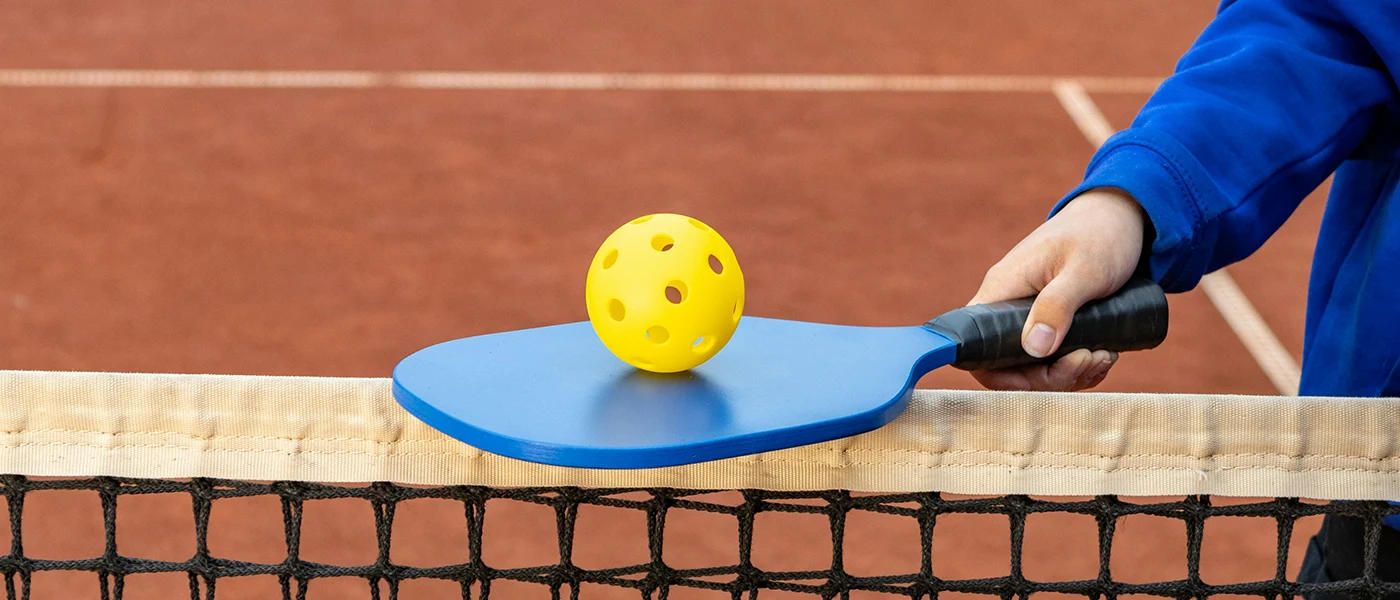
When it comes to playing pickleball, choosing the right paddle can make all the difference in both your performance and overall enjoyment of the game. With the sport’s popularity skyrocketing, the number of paddle options on the market has exploded—making the decision process feel a bit overwhelming.
That’s where we come in. This guide is designed to help you cut through the noise and find the perfect pickleball paddle for your style and skill level. In fact, according to USA Pickleball (USAPA)—the sport’s official governing body—selecting the right paddle is one of the most important steps toward improving your game and staying within tournament regulations.
Understanding the Basics of Pickleball Paddles
Before diving into the specifics, let’s first explore what a pickleball paddle is and its main components.
1. What is a Pickleball Paddle
A pickleball paddle is a solid racket used to hit the ball during pickleball games. Unlike tennis rackets, pickleball paddles are smaller and made from different materials, which affect their performance. Understanding these materials and components can significantly influence your choice.
2. Key Components of a Pickleball Paddle
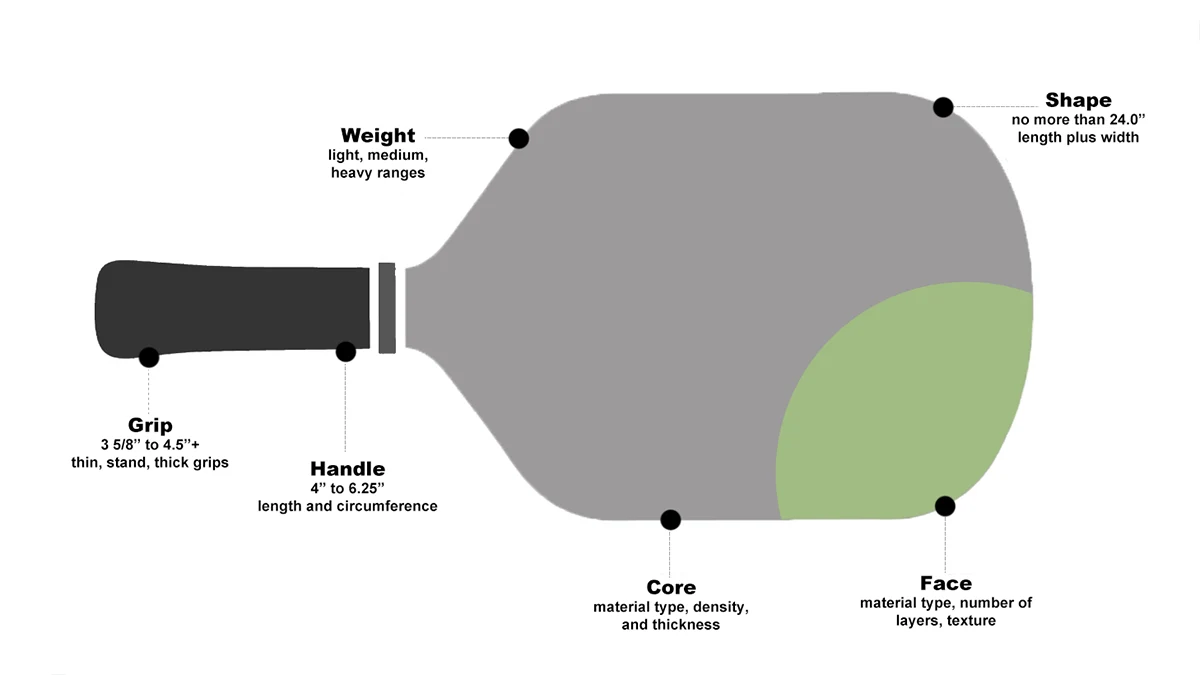
Paddle Shape: The shape of the paddle significantly impacts its performance. Wider paddles provide a larger hitting surface, while elongated paddles may offer better reach for hitting distant shots. However, According to official USAPA rulebook, the width must not exceed 24 inches to comply with official pickleball regulations.
Paddle Core: The core is the central part of the paddle that determines its performance characteristics. Common core materials include polymer, Nomex, and aluminum. The choice of material, along with its density and thickness, significantly affects the paddle’s strength, responsiveness, and overall playability. A denser core can provide more power, while a lighter core may enhance control and maneuverability. Many players find that a paddle with a thicker core offers more stability during longer rallies—especially at the net.
Paddle Face: The paddle face is the surface that strikes the ball. It can be made from various materials, such as fiberglass, carbon fiber, or wood. Each material offers distinct benefits, such as durability or power in your shots. Factors such as the material type, number of layers, finish, and texture also play a crucial role in the paddle’s performance. A multi-layered face can enhance strength and control, while different finishes and textures can affect ball spin and feel during play.
Paddle Handle: The paddle handle typically ranges from 4 inches to 6.25 inches in length. Variations in circumference can affect how comfortable and secure the paddle feels in your hand during play. Choosing the right handle length enhances your playing experience.
Paddle Weight: The weight of the paddle can also influence your playing style. Heavier paddles generally provide more power, while lighter paddles offer better maneuverability and control.
Paddle Grip: The grip size is crucial for comfort and control. An improperly sized grip can lead to discomfort and negatively impact your game. Grips are available in thin, standard, and thick options, with sizes ranging from 3 5/8 inches to over 4.5 inches, allowing players to select the size that best fits their hand for optimal performance.
Key Factors to Consider When Choosing the Right Paddle
Now that you understand the basics, let’s break down the key factors to consider when choosing a paddle.
1. Determine Your Skill Level
Are you a beginner, intermediate, or advanced player? Your skill level will significantly influence your paddle choice.
- Beginners: If you’re just starting, look for a paddle that offers a larger sweet spot and good control. A lightweight paddle can also help you develop your technique without straining your arms.
- Intermediate Players: As your skills improve, you might want to explore paddles that offer a balance of power and control. At this stage, you might start considering the material and weight of the paddle more seriously.
- Advanced Players: If you’re seasoned, you may prefer paddles that allow for greater precision and power. Consider a paddle that matches your playing style, whether it’s aggressive or strategic.
2. Pickleball Paddle Shape
Standard Shape: The standard shape is the most commonly used paddle design and is suitable for players of all skill levels. It provides a balanced performance, making it ideal for athletes who aim for consistency in their game. The grip lengths for standard paddles typically range from 4 ½” to 5 ¼”, accommodating various hand sizes comfortably.
Elongated Shape: Elongated paddles are perfect for singles players, featuring a narrower body that is 16 inches or longer. This design allows athletes to extend their reach and generate more power in their shots. The elongated shape also slightly raises the sweet spot, providing enhanced power and spin during play. However, players should note that the smaller sweet spot requires more precision in hitting.
Wide-Body Shape: Wide-body paddles are an excellent choice for beginners, as they offer a larger hitting area and a generous sweet spot. This design helps novice players make contact with the ball more easily, providing a forgiving experience as they learn the game. Typically measuring 8 inches or wider, wide-body paddles offer greater maneuverability, giving beginners the freedom to develop their skills without the pressure of precision.
3. Pickleball Paddle Core Material

The core of a pickleball paddle significantly influences its performance, as it is composed of various materials and thicknesses. A thicker core absorbs more energy, which aids in better control of shots. Conversely, a thinner core returns more energy to the ball, resulting in increased power.
Wood: Wooden paddles are typically the heaviest option available and are also the most affordable. They offer excellent durability but are considered the least technologically advanced among paddle materials. While wooden paddles provide a solid feel, they may not perform as well as other materials on the court.
Graphite/Fiberglass: Graphite and fiberglass paddles are often the most expensive, but they are favored for their lightweight nature and exceptional performance. These materials allow for better control and precision, making them ideal for players who seek elite-level performance in their game.
Composite: Composite paddles combine elements of wood and graphite or fiberglass, offering a range of weights and price points. Typically featuring a fiberglass or carbon fiber surface with a composite core, these paddles provide a balanced option that caters to various playing styles and budgets.
Aluminum: Aluminum cores are known for their strength while remaining lightweight, making them a practical choice for players who value agility and control, particularly in net play. This material offers a good blend of durability and maneuverability, enhancing the overall playing experience.
Nomex: Nomex paddles are constructed from a durable, cardboard-like material that is treated in a special resin and designed in a honeycomb structure. This construction provides excellent durability, speed, and power, making it popular among singles players. However, they tend to be the loudest paddles on the court due to their construction.
Polypropylene: Polypropylene cores are made from a soft, flexible plastic blend and are known for their quiet operation. This material effectively absorbs some of the power of a hit while still delivering strong performance, making polypropylene paddles a versatile choice suitable for all types of play.
4. Pickleball Paddle Face Materials
The face material of a pickleball paddle plays a crucial role in determining how much energy is absorbed or transferred back to the ball. Since the face is the largest portion of the paddle, it significantly influences overall performance and the ability to generate spin. Spin is primarily produced by the player’s stroke technique, but the paddle can enhance spin through either friction or adhesion.
Composite: Composite paddles are the most widely used and popular option among players. They are constructed from two or more materials, typically including fiberglass, which makes them versatile for athletes of all skill levels. These paddles excel in offering a good blend of power and spin, making them a favored choice for performance-oriented players.
Fiberglass: Fiberglass is a well-regarded face material due to its ability to provide substantial power. With a textured surface, fiberglass paddles enhance a player’s ability to generate spin and offer flexibility in play, making them suitable for various playing styles.
Carbon Fiber: Carbon fiber is a modern choice for paddle faces, known for delivering exceptional power and control. This material creates a large sweet spot, making it ideal for power-focused players who prefer a mid-weight paddle that balances performance with maneuverability.
Graphite: Graphite paddles are made from a lightweight, soft material that allows for excellent power and control. They are a popular choice among competitive and professional players, particularly for those who need a light paddle that supports dinks and powerful shots down the court.
Aluminum: Aluminum paddles are particularly suitable for beginners, junior players, or recreational athletes looking for an affordable and lightweight option. While they may not offer the same advanced performance as other materials, they are durable and easy to handle for newcomers to the game.
Wood: Wood paddles are the traditional choice and are typically the heaviest option available. They are ideal for beginners who want to start with a reliable paddle while learning the basics of the game.
Hybrid: Hybrid paddles combine the benefits of both graphite and fiberglass, resulting in a powerful performance. Although they are less common than other face materials, hybrids are an excellent choice for all-around athletes seeking light to medium-weight paddles that can accommodate various playing styles.
5. Pickleball Paddle Handle Lengths
The length of the paddle handle plays a crucial role in determining the height of the paddle face and where the sweet spot is located. Generally, the longer the handle, the higher the sweet spot will be. Handle lengths typically range from 4.5 inches to 6 inches. It’s important to note that since the total length of the paddle, including its width, cannot exceed 24 inches, any increase in handle length will reduce the surface area of the paddle face. For players who use a two-handed grip, a handle length of at least 5.5 inches is recommended.
Short Handle (< 4 3/4 inches): Short handles position the sweet spot closer to the hand, resulting in a larger surface area and a more forgiving sweet spot. This type of handle is ideal for beginners or players who prefer to grip the paddle with one finger on the paddle face.
Standard Handle (5 inches – 5 1/4 inches): Standard-length handles are a sensible choice for players of all skill levels, particularly for those who do not plan to use a two-handed grip. This handle length offers a balanced feel, making it suitable for most players.
Long Handle (5 1/2 inches and above): Long handles provide additional reach for groundstrokes, a higher sweet spot, and greater leverage for serves, resulting in slightly more power. This length is particularly advantageous for players using a two-handed grip, making it a valuable tool for enhancing their gameplay.
6. Pickleball Paddle Weight
The weight of a pickleball paddle is a crucial factor that directly impacts power, control, and overall gameplay. Generally, heavier paddles tend to generate more power, while lighter paddles allow for quicker maneuverability, enabling players to react faster and position themselves for their next shot. The ideal paddle weight varies from player to player, depending on their strength, playing style, and any physical limitations they may have.
Lightweight Paddles (< 7.2 oz): Lightweight paddles are designed for easy handling, making them particularly advantageous for net play where quick reflexes are essential. Based on feedback from amateur and club-level players, lightweight paddles are often easier on the arm and better for control drills. However, one drawback is that players may need to exert more effort to generate power with a lighter paddle. These paddles are often recommended for individuals with existing arm, wrist, elbow, or shoulder injuries, as they reduce strain while allowing for effective play.
Mid-Weight Paddles (7.3 oz – 8.4 oz): Mid-weight paddles strike a balance between power and maneuverability, weighing between 7.3 oz and 8.4 oz. This category is the most popular choice among players, making it an excellent option for novices who are still discovering their playing style. Mid-weight paddles provide a good combination of power and control, making them suitable for athletes with previous injuries as well.
Heavyweight Paddles (> 8.5 oz): Heavy paddles, which weigh over 8.5 oz, are tailored for players who prioritize power and aggressive shots from the baseline. These paddles can deliver substantial force but may be less suitable for those with past arm, wrist, elbow, or shoulder issues due to the increased weight. Players seeking to enhance their strength-based game often gravitate toward these paddles, but caution should be taken to avoid potential injuries.
7. Pickleball Paddle Grip Size
Selecting the appropriate grip size for your pickleball paddle is essential for enhancing comfort and performance during play. Grip sizes typically range from 3 5/8 inches to over 4.5 inches in circumference. Finding the right fit can significantly improve your control and reduce the risk of injury.
Thin Grip: A thin grip is ideal for players with smaller hands. While it offers a snug fit, it may provide slightly less cushioning compared to thicker grips. This type of grip allows for precise handling, making it easier to maneuver the paddle quickly during play.
Standard Grip (4 1/4″ – 4 3/8″): The standard grip size is favored by many athletes due to its balance of comfort and feel. This grip size works well for a wide range of hand sizes and is a popular choice among both beginners and experienced players alike, providing a good combination of control and cushioning.
Thick Grip (> 4 1/2″): A thick grip is suited for individuals with larger hands and offers more padding around the handle. This additional cushion can provide enhanced comfort and stability during play. However, players should ensure that their grip does not hinder their control or swing speed.
Pickleball Grip Size Chart:
| Size in inches | Size in cm | European Sizes | US Sizes |
|---|---|---|---|
| 3.94″ – 4.06″ | 10.0 – 10.3cm | 0 | 4 inches |
| 4.06″ – 4.17″ | 10.3 – 10.6cm | 1 | 4 ⅛ inches |
| 4.17″ – 4.33″ | 10.6 – 11.0cm | 2 | 4 ¼ inches |
| 4.33″ – 4.45″ | 11.0 – 11.3cm | 3 | 4 ⅜ inches |
| 4.45″ – 4.65″ | 11.3 – 11.8cm | 4 | 4 ½ inches |
| 4.65″ – 4.72″ | 11.8 – 12.0cm | 5 | 4 ⅝ inches |
| 4.72″ – 4.84″ | 12.0 – 12.3cm | 6 | 4 ¾ inches |
8. Determining the Right Grip Size for Your Paddle
a. Height Test
| Your Height | Recommended Pickleball Grip Size |
|---|---|
| Below 5′ 3″ | 4″ circumference |
| 5′ 3″ to 5′ 8″ | 4.25″ circumference |
| Above 5′ 8″ | 4.5″ circumference |
b. Finger Test
Raise your dominant hand with the palm facing up. Notice the three main creases in your palm.
Measure from the middle crease to the tip of your ring finger using a ruler. This measurement can help identify the ideal grip size. If you find yourself between two sizes, it is generally better to opt for the smaller size for a more secure grip.
c. Index Finger Test
Grip the paddle as you normally would.
Use your free hand’s index finger to test the space between your fingertips and thumb on the gripping hand.
If your index finger fits snugly in the gap, you likely have the correct grip size.
If your index finger is too tight or cannot fit at all, the grip may be too small. Conversely, if there is too much space, the grip size may be too large.
9. Pickleball Player Type
Choosing the right pickleball paddle depends significantly on your playing style and skill level. Here’s a breakdown of paddle characteristics tailored to different player types:
Beginner:
For those just starting their pickleball journey, paddles should prioritize comfort and ease of use. Ideal beginner paddles feature a light to medium weight that allows for easy swinging, ensuring players can develop their skills without feeling overly fatigued. Key attributes include:
- Comfortable Grip: A grip that feels good in the hand is crucial for beginners as it helps build confidence.
- Large Sweet Spot: A larger sweet spot increases the chances of making successful shots, even if the ball isn’t hit perfectly.
- Balanced Power and Control: Beginners benefit from paddles that offer a mix of both, allowing them to learn the nuances of the game.
Power Player:
Players looking to dominate the game with powerful shots will want paddles specifically designed for this purpose. Power paddles typically feature:
- Tighter Sweet Spots: This design enhances feedback, allowing players to feel the impact of their hits, which is essential for developing strength and technique.
- Elongated Shape: The longer design aids in generating speed and power.
- Thinner Core: This contributes to a more responsive feel, enhancing the paddle’s ability to transfer energy from the player to the ball.
- Fiberglass Face: This material is known for delivering more pop and power, making it a favorite among aggressive players.
- Longer Handle: A longer handle can accommodate two-handed grips, providing additional leverage for powerful strokes.
- Heavier Weight: Heavier paddles help generate more force, making them ideal for players focusing on aggressive play.
Touch Player:
For players who emphasize finesse and control over sheer power, touch paddles are the perfect choice. These paddles offer:
- Larger and More Consistent Sweet Spot: This feature makes it easier to place shots accurately, even when the ball is not hit perfectly.
- Forgiveness on Mis-hits: Touch paddles are designed to minimize the impact of off-center hits, helping players maintain their performance.
- More Rounded Shape: The design facilitates better maneuverability and control.
- Thicker Core: A thicker core adds to the paddle’s stability and consistency during play.
- Graphite or Carbon Fiber Face: These materials provide a good balance of touch and responsiveness, allowing for delicate shots and strategic play.
- Traditional or Shorter Handle: A handle that suits the player’s grip preference can enhance comfort and control.
- Lighter Weight: Lighter paddles allow for quick reactions and easy adjustments during fast-paced exchanges.
Brand Recommendations
While many brands offer quality pickleball paddles, here are a few reputable ones to consider:
1. Selkirk
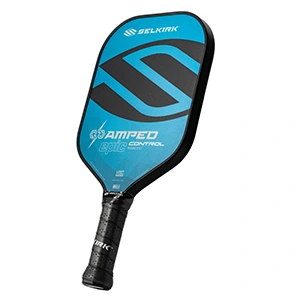
Selkirk paddles are known for their quality and performance, offering a range of options for all skill levels. Their AMPED series combines power with control.
2. Paddletek
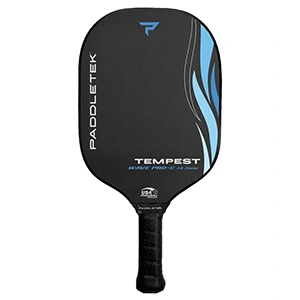
With a strong reputation for craftsmanship, Paddletek provides paddles that are both durable and stylish. Their Tempest series is particularly well-regarded among competitive players.
3. Onix
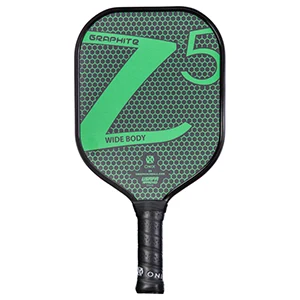
Onix paddles are known for their balanced feel and excellent playability. The Z5 is a popular choice among intermediate players for its blend of power and control.
4. Joola
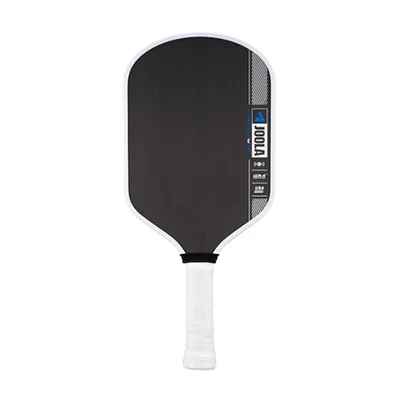
Joola offers a range of pickleball paddles engineered for competitive and professional play, combining cutting-edge carbon technology with precise craftsmanship.
Their Hyperion series stands out for its forged carbon surface, optimized sweet spot, and enhanced control, making it a favourite among advanced players.
Designed for performance-driven athletes, Joola paddles deliver power, spin, and consistency—helping players elevate every match with confidence.
Maintenance and Care Tips
Taking care of your paddle can extend its life and maintain its performance. Here are some tips:
- Cleaning: After each use, wipe down your paddle with a damp cloth to remove dirt and moisture.
- Storage: Store your paddle in a protective case to prevent damage. Avoid leaving it in extreme temperatures, which can warp the materials.
- Check for Damage: Regularly inspect your paddle for cracks or chips, especially on the face and edges. Address any issues promptly to prevent further damage.
Conclusion
Choosing the right pickleball paddle is a journey that can significantly enhance your game. By considering your skill level, paddle weight, material, grip size, and brand, you can find a paddle that feels comfortable and boosts your performance on the court. Remember, it’s not just about the paddle; it’s about how it complements your unique playing style.
At Art Pickleball, we provide high-performance pickleball paddles with a small minimum order quantity (MOQ) and offer customization options to meet your specific needs. Contact us today to learn more about our products and how we can help you!
Frequently Asked Questions
1. How do I know what grip size I need?
To determine your grip size, measure the distance from the tip of your ring finger to the second crease of your palm. If you can fit a finger between your fingers and palm when holding the paddle, you’ve found the right size.
2. What’s the difference between a lightweight and heavyweight paddle?
Lightweight paddles are easier to maneuver and suitable for quick play, while heavyweight paddles provide more power and stability but can lead to fatigue during prolonged play.
3. Can I use a wooden paddle for competitive play?
Yes, wooden paddles can be used in competitive play, but they are generally heavier and less responsive than composite or graphite options, which may affect your performance.
4. How do I care for my pickleball paddle?
To maintain your paddle, clean it after each use, store it in a protective case, and check for any signs of damage regularly.
5. What is the best brand of pickleball paddles?
Brands like Selkirk, Paddletek, Onix, and Wilson are highly regarded for their quality and performance. Choose one based on your skill level and personal preferences.
